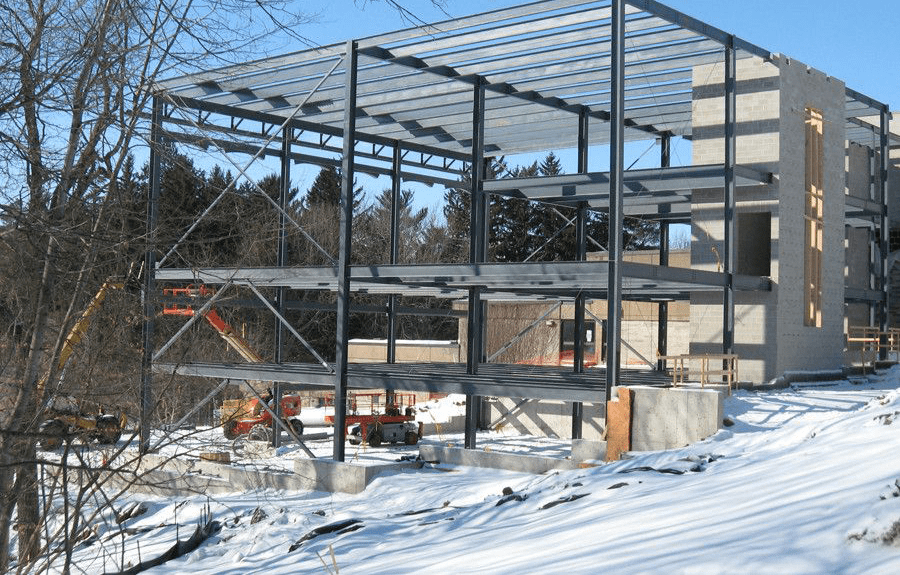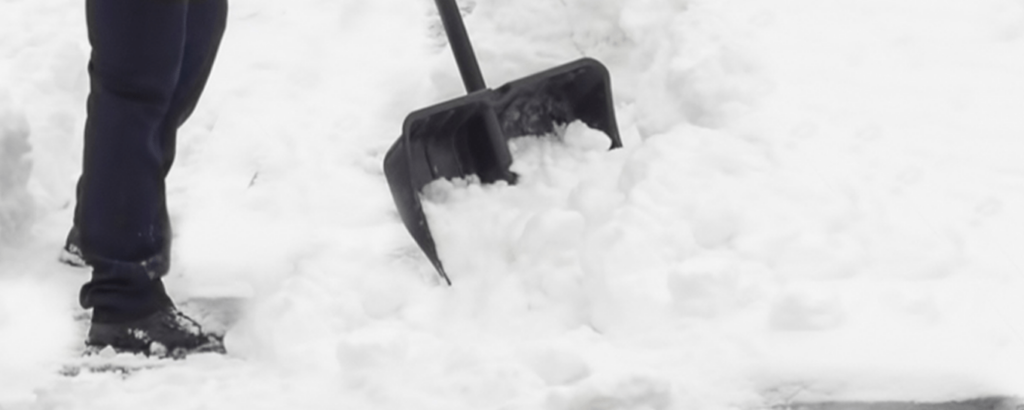It’s a struggle to know exactly when and where winter weather will hit, which is why preventative building maintenance and roof maintenance are so important. But, even the best preventative measures can’t fully protect you from damage due to heavy snowfall and ice.
As the industry-leading manufacturer of pre-engineered steel buildings for more than 100 years, Butler Manufacturing™ and Butler® Builders have seen a snowstorm or two. We’ve compiled the following winter weather tips using the knowledge we’ve gained over the last century. You’ll learn how to prepare your metal building for winter weather and what to do when your building is hit with excessive snow and ice. Should your metal building or roof experience damage from severe snowstorms or extreme winter weather, a Butler Builder® in your area can assist you with repairs.
Tips for Preventing Damage
- Start by being aware. Most people, even property managers, are unaware of the consequences of allowing snow and ice to buildup on their building’s roof.
- Contact your insurance provider for their recommendations of what to do in the event of a snow emergency.
- Their advice could be to activate a snow watch and removal crew to monitor snow depths and to remove excessive accumulations of snow from the roofs.
- Keep drains and gutters clear of ice and snow to facilitate melting run-off.
- Heat tapes in gutters and downspouts may assist in preventing ice build-up, except during extremely low temperatures.

Excessive Snow Accumulation
What to Look For
Most snow-related losses occur where blowing snow is carried from the roof of a higher building onto the roof of a lower building. This is most common when buildings are attached to each other. However, drift loads can also form on:
- Closely adjacent buildings
- Over ridges
- At valley conditions
- Behind parapets
- Next to rooftop units
- On below-eave canopies or overhangs
You should also be aware of warning signs inside your steel building that may indicate excessive snow accumulation and potential damage. If any of the following situations occur, contact your building contractor or a Butler Builder in your area immediately for assistance.
- Deflection of purlins
- Popping ceiling tiles in a drop ceiling
- Unusual noises
If your building’s roof is in danger of collapsing, you need to evacuate the building immediately.

How to Deal With a Metal Roof That is Near Collapsing
If your building’s roof is in danger of collapsing, you need to evacuate the building immediately. Once the building is empty, we recommend that you contact your building contractor and implement the following emergency procedures:
- Shore up the purlins. In most large cities, commercial shoring services are available; but, if that’s not an option, timbers may be used.
- Large industrial heaters inside the building may assist with melting snow and ice from the roof.
- Remove snow build-up. (Below is detailed snow removal information.)
Every situation is different so careful planning must be conducted before snow removal begins. Personnel safety is of utmost concern both during the shoring operation and during snow removal, so precautions must be taken.
Snow and Ice Removal Recommendations
- Always provide proper safety precautions when working on a roof, especially along the roof edge.
- Never send one person on a roof to remove snow alone.
- Place ladders at the end of the building so sliding snow will not dislodge them.
- Recommended order of operations and best practices for snow removal:
- Prior to removing snow from the roof, remove all hanging icicles from eaves and gutters. These can be quite heavy and may prevent snow from being pushed off the roof.
- Snowdrifts should be removed from the remaining roof first.
- Remove snow from the middle 1/3 of each bay (from eave to eave), beginning with the most snow-packed bay.
- Complete snow removal on the remainder of the building.
- If your building has gables, remove snow on both sides of the ridge at the same time.
- Remove snow in a pattern that does not cause an unbalanced loading condition. Avoid the large differences in snow depth between adjacent areas of the roof.
- Remove snow gradually in layers from all over the roof.
- Remove snow from the eaves toward the ridge, but be cautious of snow or ice breaking away and sliding down the roof.
- Do not pile shoveled snow on other areas of the roof or on other roofs. Keep dumping area clear of all persons and property.
- Always use plastic shovels.
- Do not use picks, axes, or other sharp tools.
- Do not attempt to remove snow by washing it off with a hose. Snow acts as a sponge and will rapidly absorb water, increasing the loads on the roof and potentially causing failure.
- Be careful to avoid hitting panel straps, fasteners, snow guards, etc. with snow removal equipment. Care must also be taken in removing snow and ice around ventilator bases, pipe flashing, rooftop unit supports, conduits, etc., since such items are easily damaged.
- Be aware of skylight systems locations. These panels are not intended to support roof foot traffic loads.
What to Do If Your Building's Roof Collapses Due to Snow and Ice
- If maintenance and prevention efforts weren’t enough to stop mother nature, and the roof of your building collapses due to excessive snow and/or ice accumulation, take the following steps as quickly as possible.
- Prevent damage to your building’s contents by promptly removing snow. Mitigation of loss should be the priority.
- Begin construction of a temporary cover to keep the weather out and allow clean-up to commence.
- Contact your building contractor and insurance agent.
Should winter weather get the better of your current building and its roof, our network of Butler Builders have the ability and the experience to tackle any roofing project. For more than 100 years, Butler Manufacturing and our roofing systems have set the industry standard when it comes to durability and efficiency. From new construction to retrofit—and from low slope to soaring rooflines—our metal roof systems offer unmatched flexibility and performance.